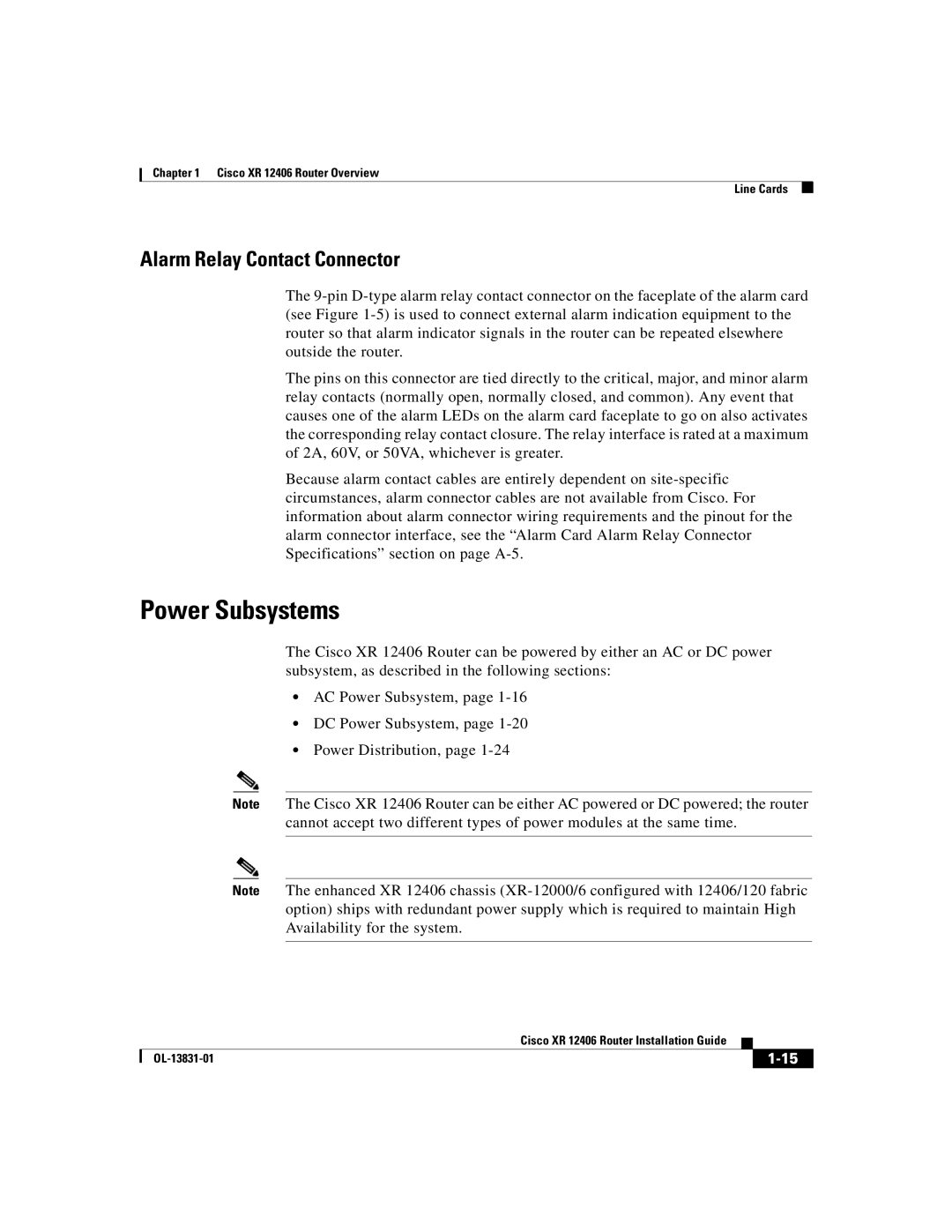
Chapter 1 Cisco XR 12406 Router Overview
Line Cards
Alarm Relay Contact Connector
The
The pins on this connector are tied directly to the critical, major, and minor alarm relay contacts (normally open, normally closed, and common). Any event that causes one of the alarm LEDs on the alarm card faceplate to go on also activates the corresponding relay contact closure. The relay interface is rated at a maximum of 2A, 60V, or 50VA, whichever is greater.
Because alarm contact cables are entirely dependent on
Power Subsystems
The Cisco XR 12406 Router can be powered by either an AC or DC power subsystem, as described in the following sections:
•AC Power Subsystem, page
•DC Power Subsystem, page
•Power Distribution, page
Note The Cisco XR 12406 Router can be either AC powered or DC powered; the router cannot accept two different types of power modules at the same time.
Note The enhanced XR 12406 chassis
|
| Cisco XR 12406 Router Installation Guide |
|
|
|
|
| ||
|
|
|
| |
|
|
|
